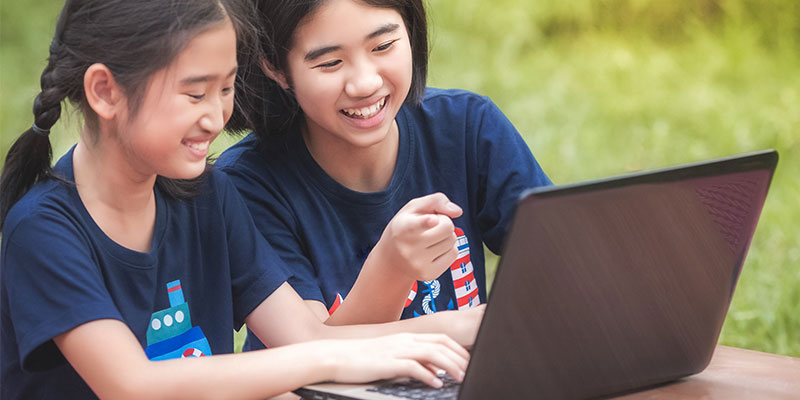
Experiment-based questions are a part of PSLE Science, contributing to approximately 9% of the total score. Your kid will be at a great advantage if they know about the questions and how the evaluation process works. Experiment-based questions require students to analyse and interpret the results to evaluate their processing skills. We have consolidated a few techniques to answer the experiment-based questions in the PSLE Science examination and score high. You can gain additional guidance from PSLE Science learning platforms, which offer the entire collection of previous year's question papers.
Experiment-based questions revolve around the following points.
Learn how to approach the above parts of experiment-based questions in a smart manner using PSLE Science learning platforms.
Let us see how to answer the experiment-based questions successfully below.
Identify the Three Different Variables
The three different variables are:
Experiment Process
The aim of an experiment is always linked to the dependent and independent variables. Only the independent variable changes in all experiments. Students must determine the experiment's aim by determining how the independent variable will affect the dependent variable. Then they have to state the cause and the effect with the relevant connection between the variables. Consider the example with clear water and a hydrilla plant in it. The clearer the water, the quicker the plant photosynthesises. Here the cause is water clarity, and the effect is the speed of the photosynthesis process. You can teach this simple experiment to your child by taking a water sample that is polluted and another that is clean. Place the hydrilla plants in both the setups on a window sill and record the bubbles developing in them. Ask students to write the aim of the experiment, independent variable, dependent variable, control variables, and how the independent and dependent variables are connected. You can download sample answer sheets from PSLE Science learning platforms and make your child understand how to proceed with various experiments.
Let us see how to identify the various parts of experiment-based questions in detail here.
Aim of the Experiment
The aim of an experiment is to determine how a changed variable affects the measured variable. For example, students can keep a torch in various places underwater near a submerged plant. Students can count the bubbles produced in one minute and the distance of the torch from the plant. Here, the changed variable is the light's intensity. The effect will be the rate of photosynthesis. Thus, the aim of this experiment will be to find how the light's intensity affects the rate of photosynthesis. You can learn more experiments through PSLE Science learning platforms and teach your child how to arrive at an experiment's aim.
Fair Test
A fair test is performed by having one measured variable and a changed variable with all the other variables constant. A few variables are kept constant to ensure that the difference in the measured variable is caused only due to the changed variable. PSLE Science learning platforms teach you how to perform a fair test by giving more detailed information about the variables through several experiment examples.
Comparison
Experiments must provide different results with different setups to help derive conclusions. In a few experiments, the results turn out to be the same; in such circumstances, we will not be able to make any comparison. One such classic example is observing the mould formation in two pieces of bread slices. One is toasted, whereas the other is non-toasted. With the result, we cannot conclude anything about the experiment here. Thus, the measured variables must be made more specific.
Students can make more clear comparisons if the mould is allowed to grow in two setups of different warmth. A fridge and a cupboard may be the best setups to prove the effect of warmth on mould growth. When a student is made to perform this experiment, they will observe that the cupboard setup facilitates faster mould growth than the one in the fridge. For similar experiment ideas, feel free to check PSLE Science learning platforms.
Control
A control is used to show that an experiment is valid in its setup. Here no variables are tested, but the setup offers the baseline for results to be compared. You can educate your child about control easily by performing the germination of seeds and analysing the effect of detergents on them. The seeds can be tested with different concentrations of detergents with a control setup devoid of detergent. The control factor allows comparing the results to establish the fact that the changed variable generates the measured variable. To gain more knowledge about the control factors and how it works in various experiments, check out PSLE Science learning platforms.
Conclusion
The conclusion must include how the changed variable has an effect on the measured variables. For example, in the case of the photosynthesis experiment, students should not conclude by stating that light has an impact on the rate of photosynthesis. Instead, they must be more precise, stating that as light intensity increases, the photosynthesis rate increases. You can provide numerous examples from PSLE Science learning platforms for your child to understand how to write the conclusion part.
Now that you know what to expect and how to approach the experiment-based questions in PSLE Science, you will be able to score better and stand out from your peers. Studysmart is an excellent PSLE preparation platform exclusively designed for students in Singapore, powered by Artificial Intelligence. We have an in-built database filled with question banks and study materials for students to ace the PSLE exam effortlessly.
We also recommend our readers to check our Google Business Website for the recent updates and news regarding Study Smart Learning Platform.
No. 1, North Bridge Road,
#07-07 High Street Centre,
Singapore - 179094
Phone: +65 8488 8686
Email: enquiry@studysmart.sg